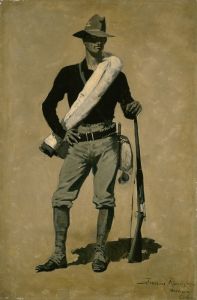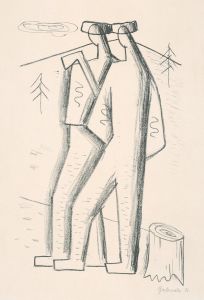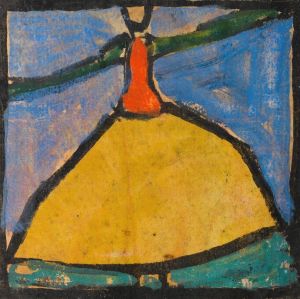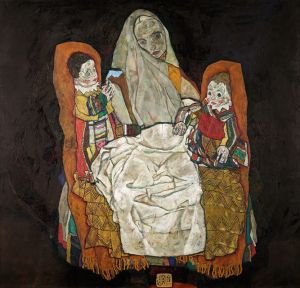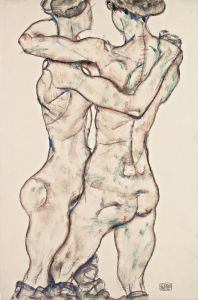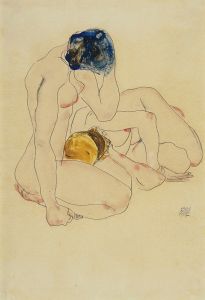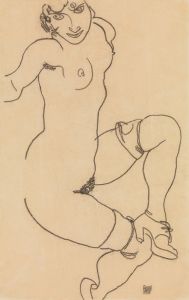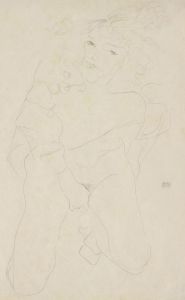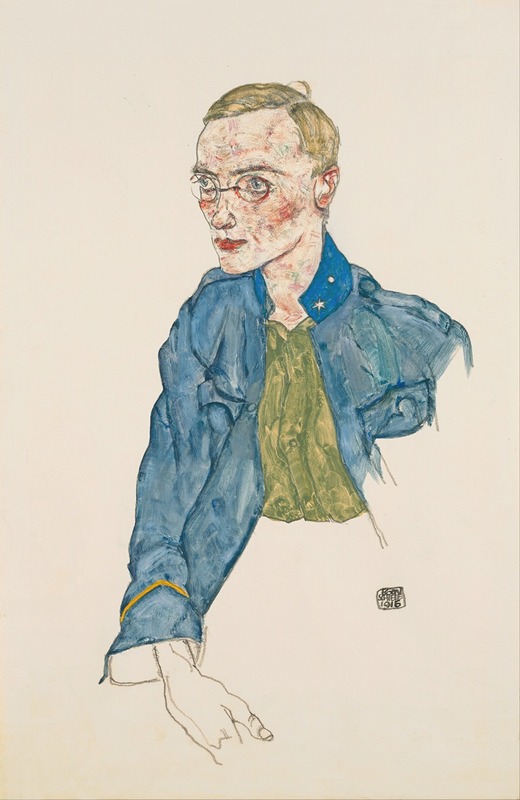
One-Year Volunteer Lance-Corporal
A hand-painted replica of Egon Schiele’s masterpiece One-Year Volunteer Lance-Corporal, meticulously crafted by professional artists to capture the true essence of the original. Each piece is created with museum-quality canvas and rare mineral pigments, carefully painted by experienced artists with delicate brushstrokes and rich, layered colors to perfectly recreate the texture of the original artwork. Unlike machine-printed reproductions, this hand-painted version brings the painting to life, infused with the artist’s emotions and skill in every stroke. Whether for personal collection or home decoration, it instantly elevates the artistic atmosphere of any space.
"One-Year Volunteer Lance-Corporal" is a painting by the Austrian artist Egon Schiele, created in 1912. Schiele, known for his distinctive and often provocative style, was a major figure in early 20th-century art, particularly within the Expressionist movement. His work is characterized by its raw emotional intensity, bold lines, and often unsettling subject matter.
The painting depicts a young soldier, identified as a lance-corporal, who is likely a volunteer serving for a one-year term, a common practice in the Austro-Hungarian military at the time. The figure is shown in a military uniform, which is rendered with Schiele's typical attention to detail and expressive brushwork. The soldier's face is gaunt and his expression is intense, capturing a sense of inner turmoil or contemplation.
Schiele's use of color in "One-Year Volunteer Lance-Corporal" is notable for its stark contrasts and the way it enhances the emotional impact of the piece. The background is often abstract or minimally detailed, drawing the viewer's focus to the figure itself. This technique is a hallmark of Schiele's portraiture, where the emphasis is placed on the psychological state of the subject rather than their physical surroundings.
The painting reflects the broader themes present in Schiele's work, including the exploration of human psychology, the fragility of life, and the complexities of identity. During this period, Schiele was deeply influenced by the socio-political climate of pre-World War I Europe, and his art often conveys a sense of existential anxiety and introspection.
Egon Schiele was a student of Gustav Klimt and was part of the Vienna Secession movement, which sought to break away from traditional academic art and embrace more modern, experimental approaches. Schiele's work, however, was more radical and personal than that of many of his contemporaries. His depictions of the human body, often in contorted and uncomfortable poses, challenged conventional notions of beauty and propriety.
"One-Year Volunteer Lance-Corporal" is an example of Schiele's ability to convey deep emotional and psychological states through his art. The painting is part of a larger body of work that includes numerous portraits and self-portraits, each revealing different facets of the human condition. Schiele's work was controversial during his lifetime, and he faced legal troubles and public censure for what was considered the explicit nature of his art.
Despite his relatively short career—Schiele died in 1918 at the age of 28 from the Spanish flu—his influence on modern art has been profound. His work is celebrated for its emotional depth, technical skill, and innovative approach to portraiture and the human form. "One-Year Volunteer Lance-Corporal" remains a significant piece within Schiele's oeuvre, exemplifying his unique artistic vision and his ability to capture the complexities of the human experience.





